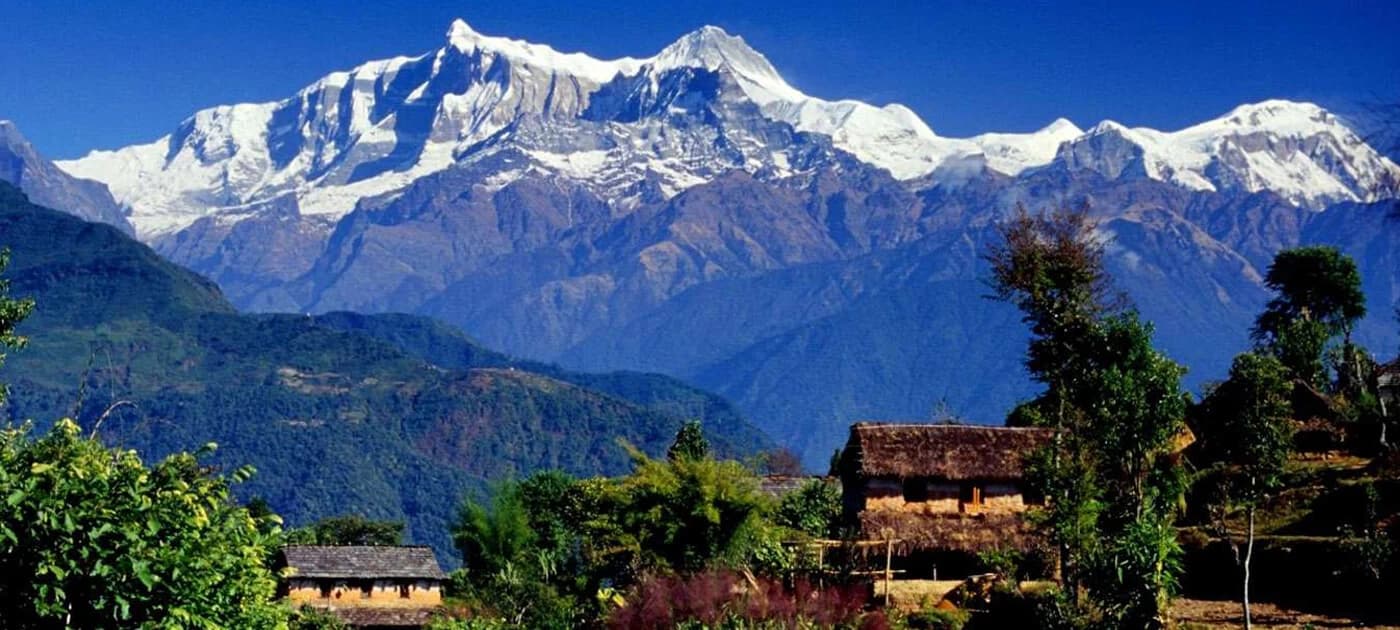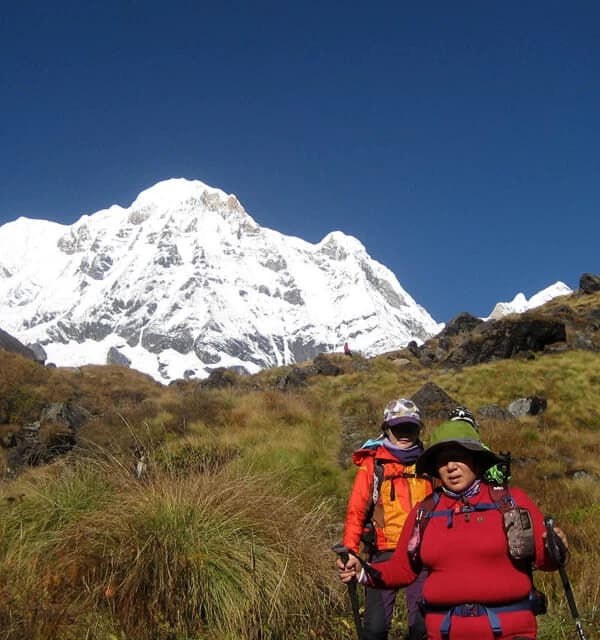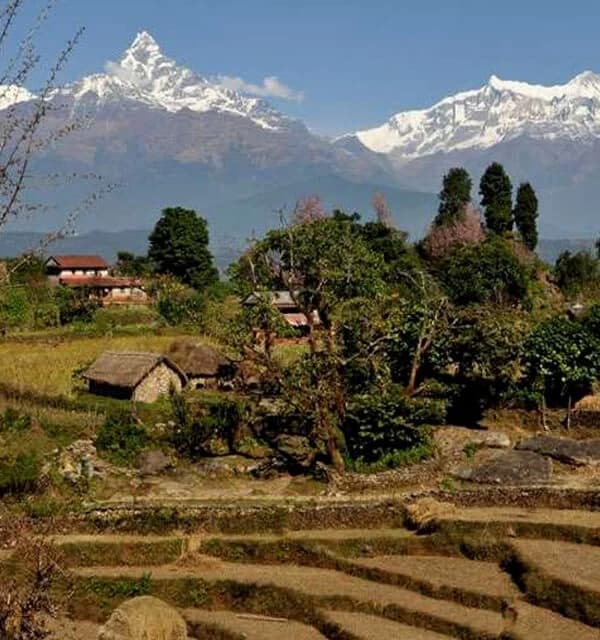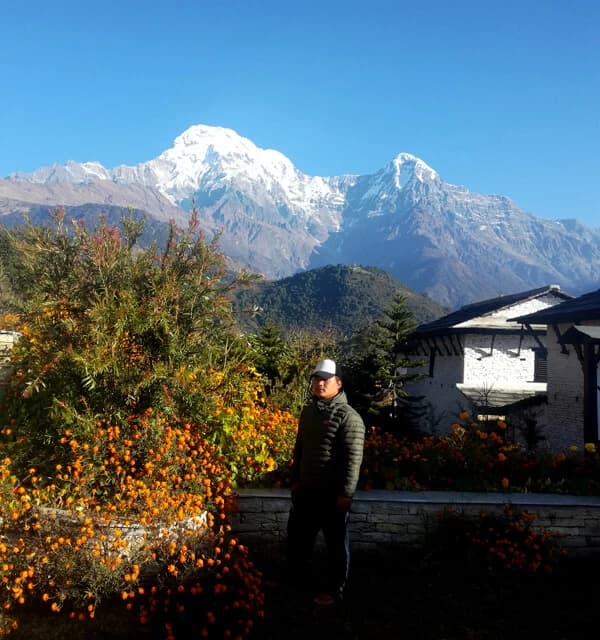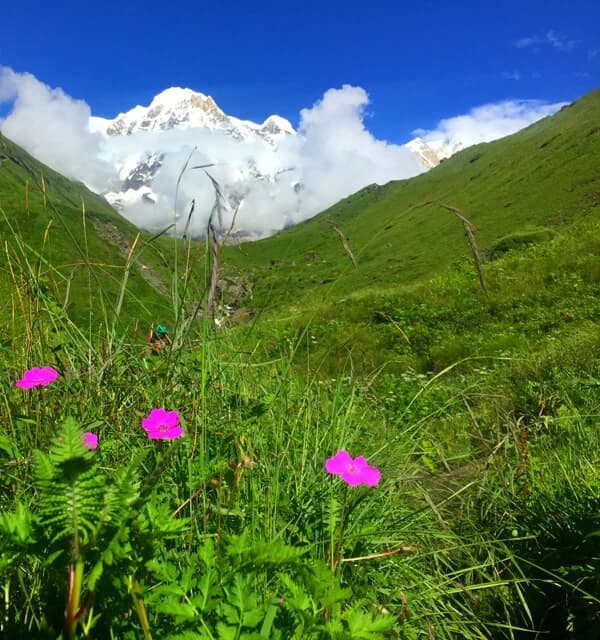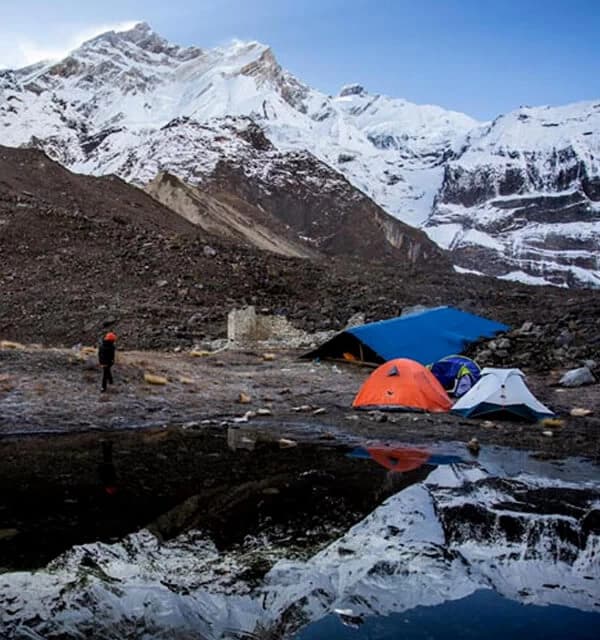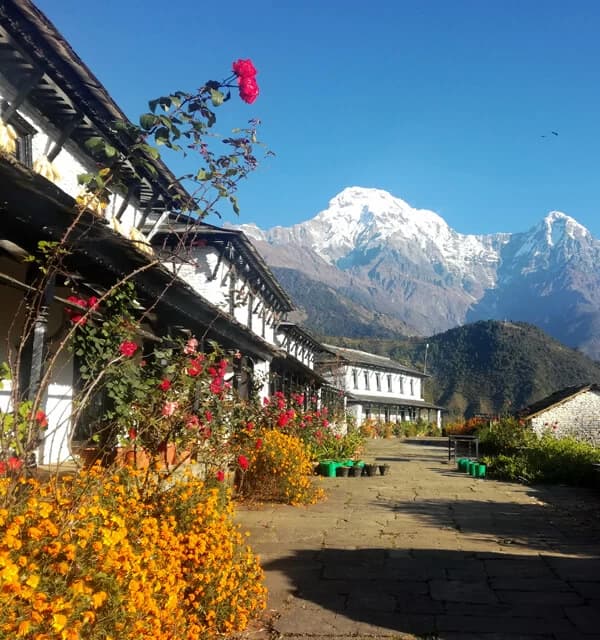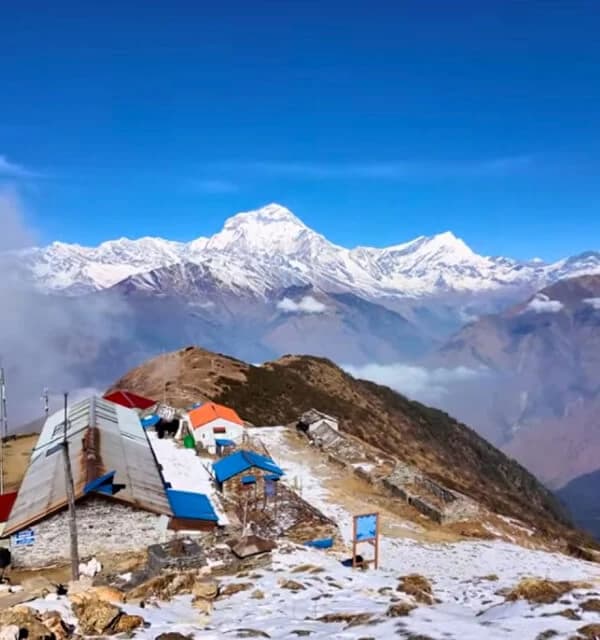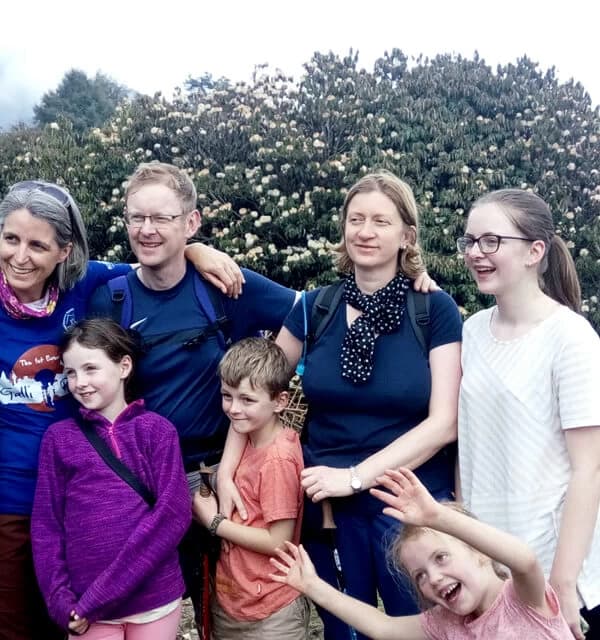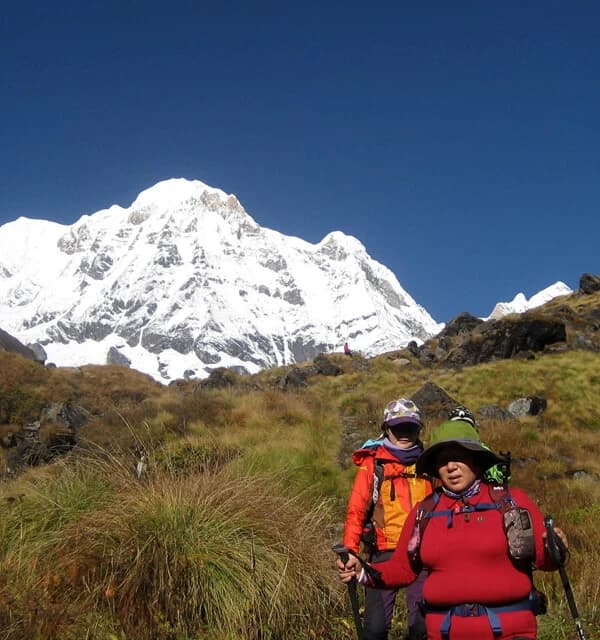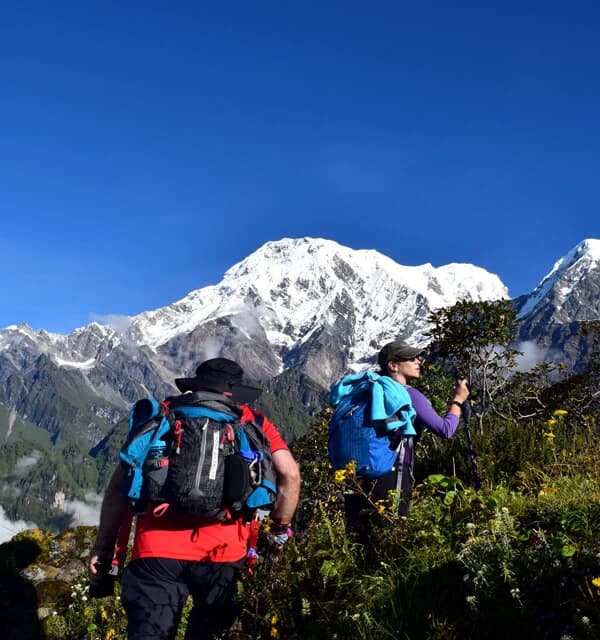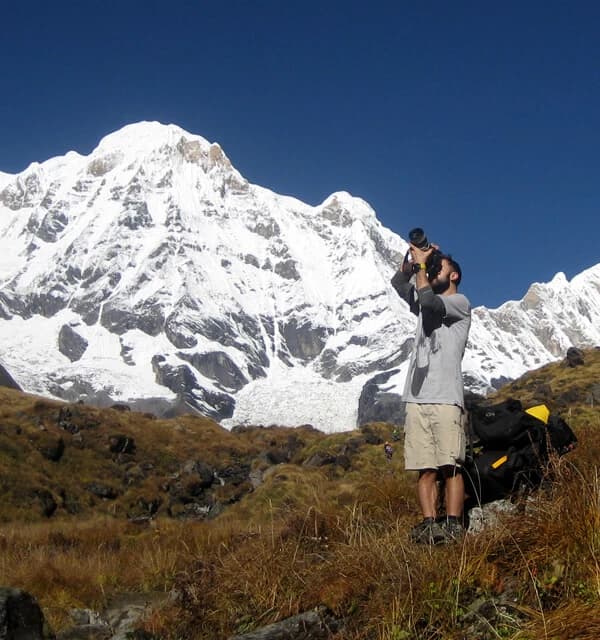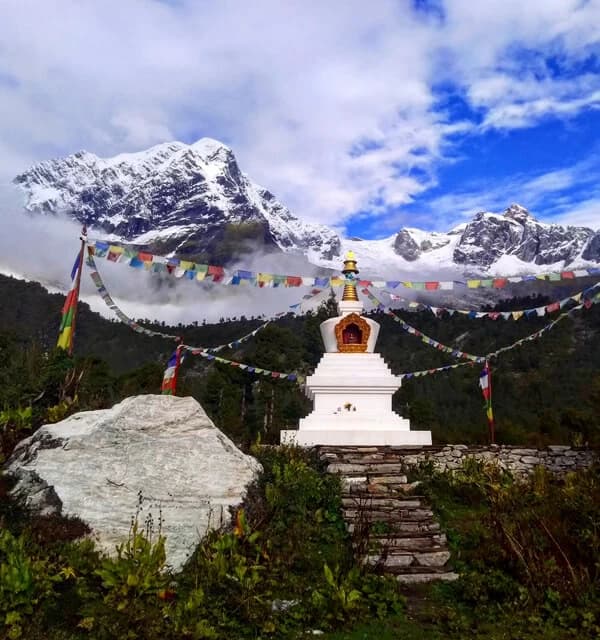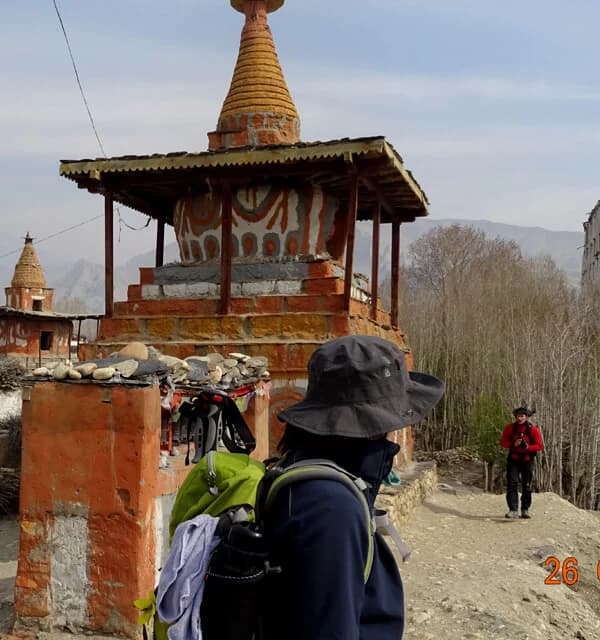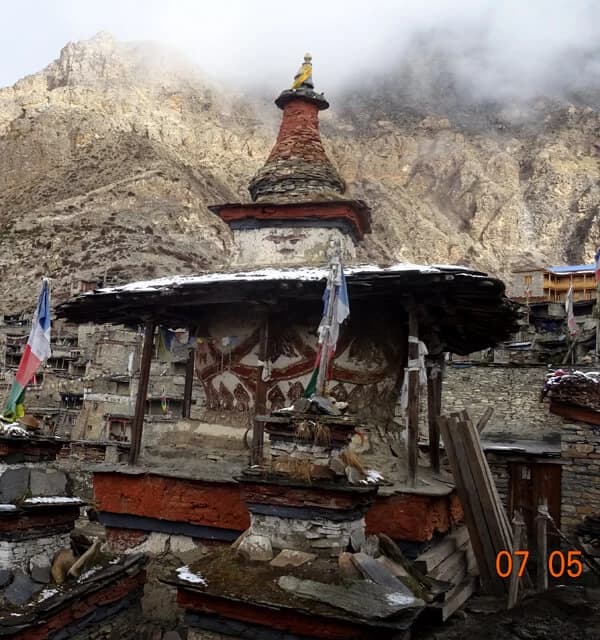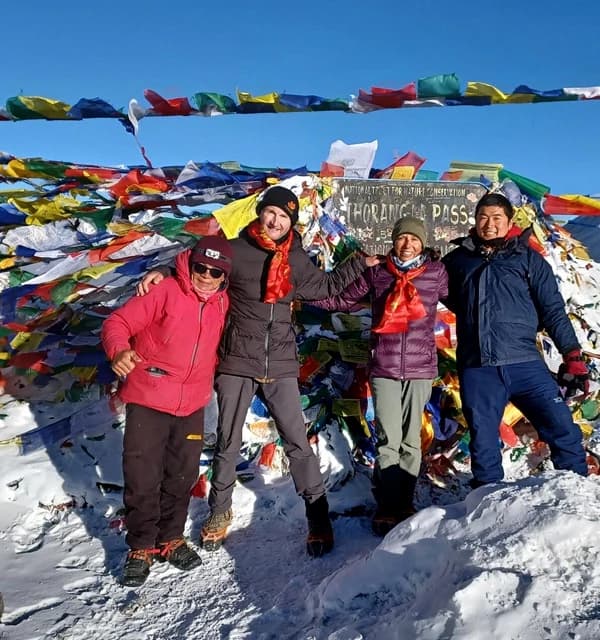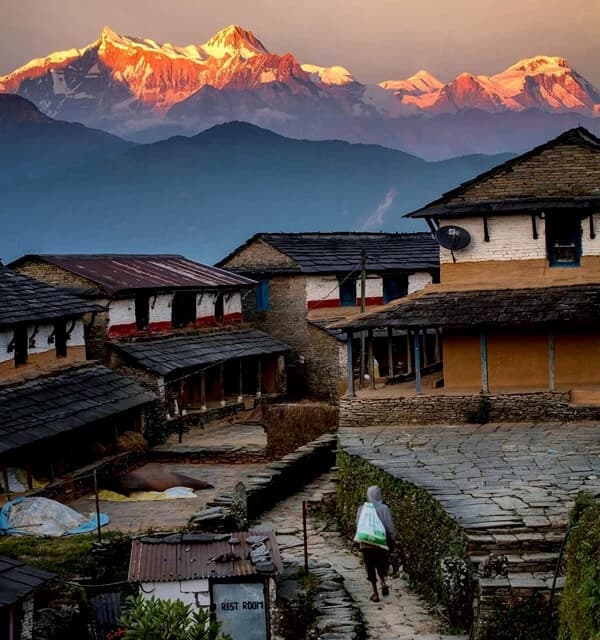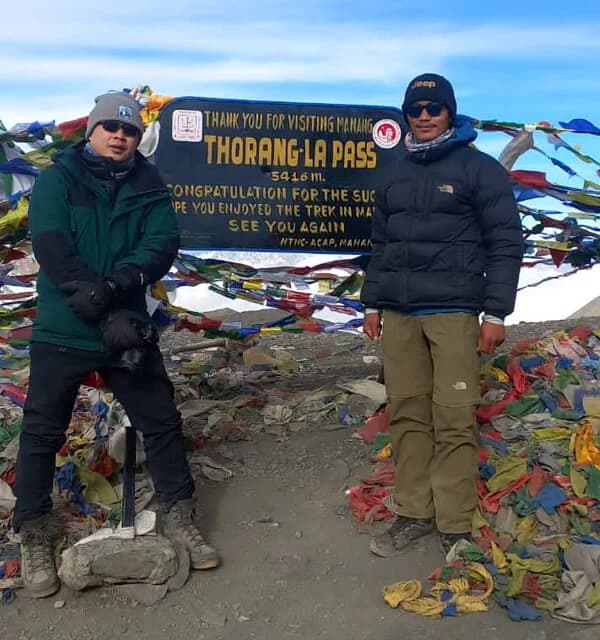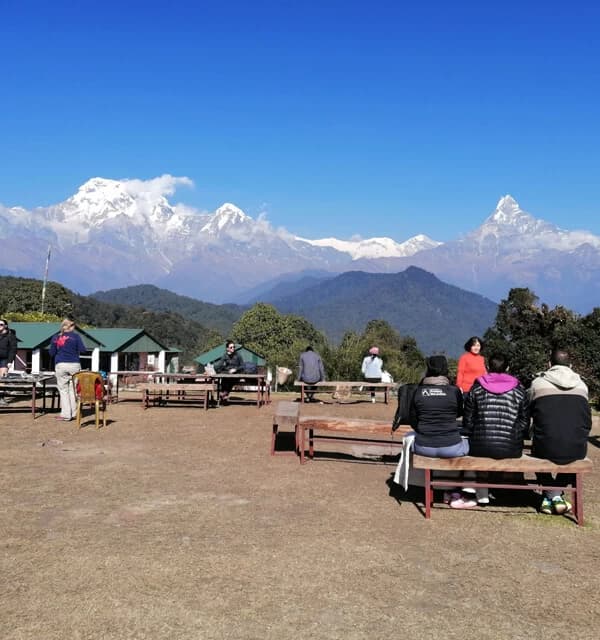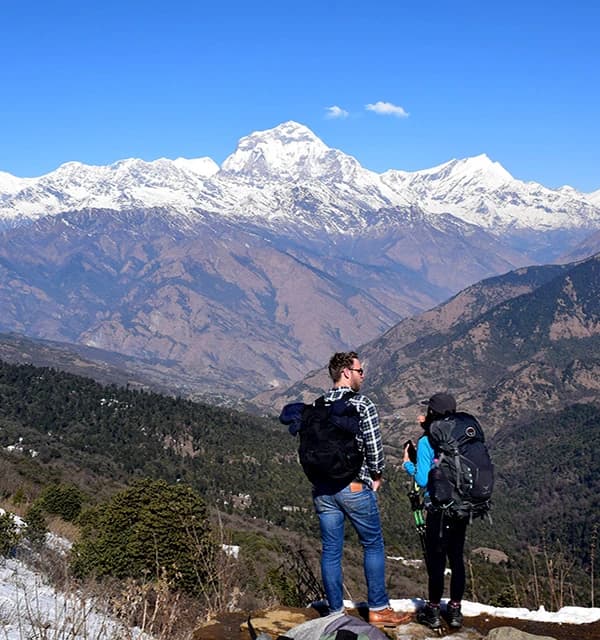Annapurna, Nepal's second most popular trek, boasts diverse routes, stunning scenery, and iconic peaks like Annapurna I and Machapuchhare. Treks range from lush valleys to high-altitude deserts, showcasing diverse cultures.
Annapurna Treks
Annapurna Trek is the second most popular trekking destination after Everest; one of Nepal’s most fascinating routes offers some of the finest trekking trips. The Annapurna Himal is named after the Hindu goddess of grain and abundance. The Annapurna range dominates central Nepal, with Annapurna I being the highest at 8091 m, followed by Annapurna 2 at 7973 m, Annapurna 3 at 7555 m, and Annapurna South at 7219 m. Other high peaks in the area include Tilicho Peak at 7134 m and the simply stunning, sacred Machapuchhare (Fishtail Mountain) at 6993 m. To the south lie the lush valleys around Pokhara in one of Nepal’s highest rainfall areas, and to the north is the high altitude desert and highly erodible ‘badlands’ of Mustang, part of the Tibetan Plateau. To the east is the Marshyangdi River, and to the west lies the world’s deepest gorge, carved out by the wild waters of the Kali Gandaki River.
Some of the best Annapurna treks are easily accessible. No flights are required to get to the famous Annapurna Base Camp, Annapurna Sanctuary, world-famous Annapurna Circuit, and short treks like Ghorepani Poon Hill, Ghandruk Trek, Mardi Himal, and Sikles Trek. Except for the Annapurna Circuit, most of the Annapurna Treks start from Pokhara, a naturally blessed city that is 200 km west of Kathmandu. There are daily comfortable tourist buses that leave for Pokhara at 7:00 am from Kathmandu. Several airlines operate daily flights to Pokhara. A trek to the Annapurna Circuit and Upper Mustang Trek takes you to an insight into Tibetan cultures. The people living in Pisang, Manang, Kagbeni, Muktinath, and Upper Mustang have very similar speeches to Tibet, and their dresses, traditions, and culture are religious practices of Tibetan Buddhism. There are ancient monasteries, prayers engraved on stone walls, stupas, and chortens seen in every village of the upper part of the Annapurna trek, while other treks in the lower Annapurna route are inhabited by the most welcoming ethnic groups of Gurung, Magar, Thakalis, Tamang, and Brahmin. Though the last, most devastating Nepal earthquake, followed by the April 25, 2015 epicenter, was in Gorkha near the Annapurna region, fortunately, very little minor damage happened in the area, and all the trekking routes in Annapurna are intact, with no effect at all.
When to trek?
The best recommended time to trek to Annapurna is from mid-September to November in the autumn and from March to May. Still, many people trek in December, January, and February (winter) to avoid the flood of trekkers and trek peacefully. And some of the Annapurna part, like the Upper Mustang, is under the rain shadow. While the fall season may have the clearest skies, trekking during the monsoon has its advantages. Some treks should be avoided, but for certain regions, it's a great time to visit Nepal: the trails are less crowded, the villages are full of life, and the valleys are in bloom. For the itinerary, trip cost, photos, and map, please see the packages. Wilderness Excursion is one of the best-registered trekkings run by local trek experts and offers some of the best Annapurna trek packages for the year 2026.
